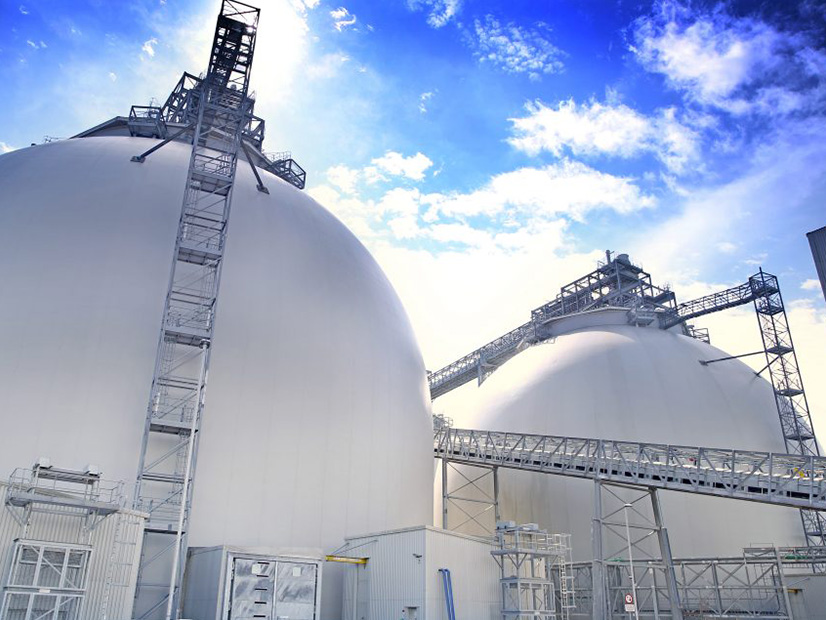
Maine has the forest industry and ports it needs to participate in the global industrial wood pellet market, and it’s positioned to lower the fuel’s shipping footprint, said consultant William Strauss.
The U.S. is the biggest industrial pellet fuel (IPF) exporter in the world, reaching 7 million metric tons in 2020, said Strauss, who is president of FutureMetrics. But he says shipping is the largest contributor to the carbon footprint of delivered IPF, if the pellets are carbon neutral in combustion.
U.S. exports originate largely from the Southeast, giving Maine’s ports a “a huge shipping distance advantage,” he said Tuesday during an Environmental and Energy Technology Council of Maine webinar.
As of 2017, ports in Savannah, Ga., and Norfolk, Va., were responsible for more than half of IPF exports in the Southeast, according to Oak Ridge National Laboratory. For shipping to the U.K., the biggest importer of U.S. pellet fuel, Maine’s three major deepwater ports could cut between 500 and 1,000 miles off the transportation carbon footprint from those Southern ports.
Industrial pellets are used to replace coal in utility-scale, pulverized coal boilers, with the global market shipping 25 million metric tons in 2021. The carbon neutrality of the fuel’s combustion is dependent on basic sustainability with forest growth rates.
“Behind the industrial pellet sector is a stringent and rigorous third-party auditing system that proves sustainability,” Strauss said. “That means that you’re never harvesting at a rate that’s any greater than the growth rate.”
While sustainability requirements limit how much forest resources can be used as IPF, Strauss says the market will see significant growth in the coming years.
If it grows as projected, he said the global IPF market will need 22.5 billion metric tons per year of new production capacity by 2027. Changes in Maine’s forest industry make IPF an important option for the state’s $8-billion forest products sector.
Demand for pulp chips and low-grade biomass has disappeared or is drying up, and both of those forestry residues are good for pellet fuel, Strauss said.
Currently, all IPF in the U.S. is exported, as no coal plants in the country use the alternative fuel. Carbon policy is going to change that, Strauss said.
There are 498 operating coal-fired power plants with 50 MW or more generating capacity in the U.S., and many are in areas where industrial pellets are already produced. Of the group, 39 units are less than 15 years old and average 555 MW each, Strauss said.
“If those units are shut down or natural gas takes over and they lose their value as a generating station, there’s a cost associated with that,” he said. Those 39 units, he added, have a strong potential for pellet fuel use.
If coal plant owners in the U.S. do begin to convert facilities to co-fire pellets, Strauss estimates the domestic IPF demand could reach 5.2 million metric tons by 2027.
Carbon-negative IPF
The potential for the U.S. to build out a fleet of coal plants that co-fire IPF could lie in a bioenergy carbon capture and storage (BECCS) pilot at the Drax power plant in North Yorkshire, England.
Four of the six coal boilers at the Drax facility were converted to biomass, and Drax Group is working with Mitsubishi Heavy Industries to understand negative emissions technology at the plant.
Using existing pipeline infrastructure, the companies plan to store carbon dioxide from the biomass units permanently under the North Sea.
“Think of it as the trees doing the work of absorption but regrowing constantly,” Strauss said. “You have a constant renewing supply of carbon emissions that are actually being captured and not returned to the atmosphere.”
If the fuel used in the biomass units isn’t harvested faster than the forest growth rate, the sequestration process would make the units carbon-negative.
Drax Group hopes to have BECCS running on two of the four biomass generating units by 2030, with initial construction starting in 2024 and the first unit operational in 2027.


